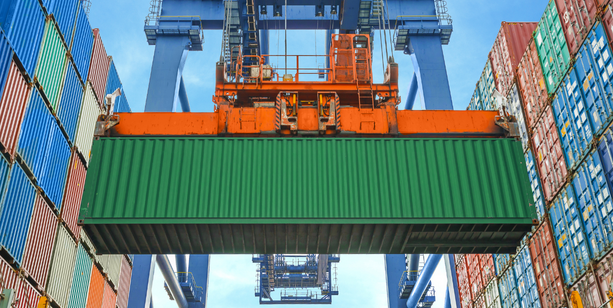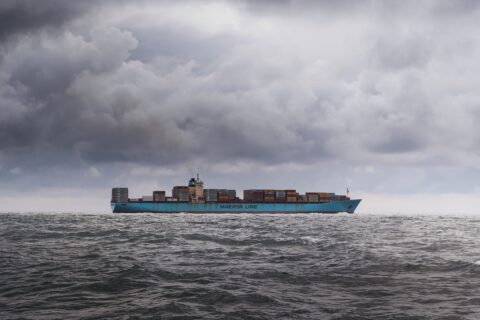
Freight shipping is a reliable, cost-effective way to move goods. However, it can be challenging to get started and know the lingo. But that’s okay! Almost anyone can become a freight maven if they understand some of the more common questions and challenges. Freight is a good way to transport anything that can be moved safely—think perishables like food and pharmaceuticals, construction materials, machinery and equipment, raw materials for manufacturing, personal belongings, electronics, and even pets. Freight shipping takes advantage of how efficiently you can transport bulky or heavy items over long distances compared with road transportation. It also helps reduce environmental impact by using less gas or diesel than driving the same goods by car.
What is freight shipping?
When you ship merchandise, you’re transporting it from one place to another, usually somewhere far away. The goods being transported may be bought, sold, or being returned. All types of transportation companies—from freight brokers to freight forwarders—provide shipping services for both domestic and international freight. What separates freight shipping from other types of transportation is that the carrier is a third party responsible for moving your freight. Freight shipping is the movement of goods by ocean, air, or any other method that can be used to transport bulk and heavy loads. Other terms for this type of transportation include intermodal transportation, transport shipping, and ocean freight.
How does freight shipping work?
When people talk about shipping, they may mean ocean freight, air freight, or any combination of the two. But the methods of moving goods have stayed the same since the days of sail. The process begins with the shipper—the person or business that’s sending the goods. The shipper may be the owner of the goods or an agent of that owner. Once the shipping paperwork is completed and payment is made, the shipper will put the goods on a container or in a shipping container for transport. The container may already be filled with other goods, so the shipper needs to find someone who will take it in exchange for the value of the empty space taken up by the container. The container will then be loaded onto a ship and sail from the port where it departed from.
Freight shipments by air and sea
If you’re looking for a different way to transport goods, air freight is another option. When receiving goods in this way, the shipper pays a fee to have them flown to a central location. The shipper then loads the goods onto a truck or plane for transport to the customer. Air freight is a popular choice because it’s fast and efficient. But it’s also expensive, so keep that in mind. For the longest distance, sea freight is the most cost-effective method of freight shipping. This is because sea freight can travel the farthest distance without needing to refuel, making it the most environmentally friendly method of freight shipping. However, it also takes the longest time to complete a shipment.
Tips for starting with freight
– Freight brokers are essential for finding customers and negotiating rates and terms, so find one and work with them as a long-term partner.
– Ship small quantities of good or service to start, then build up from there.
– Find a carrier and vessel with a reputation of being reliable, and make sure it’s good for shipping your type of goods.
– Keep track of the condition and location of your containers with a tracking system
– Take advantage of freight discounts and services, such as having containers inspected.
– Keep written records of all freight documents, such as bills of lading, and make sure they’re available for inspection.
5 Things You Should Know Before Starting Shipping
Before you get started with freight, remember these five things to help you get started in the right direction. – How will the goods be transported? – Where will they be shipped? – Who will receive the goods? – How will the goods be kept? – Who pays for the freight? These five things will help you navigate the freight shipping process safely and successfully. They also provide a good overview of how the freight shipping industry works.
1. How to get started with freight
The first thing to do is to find a freight broker that can help you find customers and find freight. Look for a broker that has experience with your type of goods and that’s well-known for making deliveries. Next, assess what you want to move. Will it be breakable items, like furniture and household items, or heavy equipment and machinery? You’ll need to assess what will work best for your goods and their specific properties.
2. How to find a carrier and vessel with a reputation of being reliable, and make sure it’s good for shipping your type of goods.
Next, you’ll need to find a ship or carrier that will be able to transport your goods. This is where carriers’ reputations as a reliable shipper will come in handy. Make sure the carrier you choose has experience for transporting your goods.
3. Keep track of the condition and location of your containers with a tracking system
After finding a carrier and vessel, you’ll need to find a way to track the whereabouts of your containers. This can be done with a digital container tracking system.
4. Take advantage of freight discounts and services, such as having containers inspected.
Next, you’ll want to take advantage of discounts and services offered by the shipping company. This can help you reduce the cost of shipping and make sure your goods arrive without any problems.
5. How to manage the transportation process
Freight can be challenging to get started with, but it doesn’t have to be. Remember, freight is just moving things from one place to another. With a little preparation and effort, you can find success with freight shipping. Plan your freight shipping ahead of time by thinking about the goods you want to ship, the distances involved, and the customers you want to see their products arrive safely. Do your research on the carriers you’re considering for a particular shipment to help you make an informed decision about which one works best for your goods. Keep track of the condition and location of your containers with a tracking system, and make sure to do regular inspections.
What happens when a shipment gets delayed or damaged?
Delays can be frustrating when they occur, so it’s important to be prepared for them. If the shipment is delayed, make sure you note the exact location of the delay. If the shipment is damaged, make sure you note the exact location so you can report it to the carrier.
Conclusion
Freight shipping is a reliable, cost-effective way to move goods. Freight can be challenging to get started with, but it doesn’t have to be. Remember, freight is just moving things from one place to another. With a little preparation and effort, you can find success with freight shipping.
ProConnect Integrated Logistics for your Business
ProConnect is a third party logistics company incorporated in 2015 to capture the Middle Eastern 3PL market with prime focus on achieving optimal efficiency and customer satisfaction.
Headquartered in Dubai, UAE, we have the ability to do more than just support your business operations, with our sophisticated package of end-to-end integrated supply chain solutions. ProConnect services cater to all verticals, including new age businesses and mission-critical support.
With 650,000+ sq. ft. of warehousing space, valued partners across verticals and operational excellence with diverse technologies, we revel in the domain of logistics, catering to multiple market sectors according to their own unique requirements!
For any questions or evaluation, get in touch with us.





 APP DOWNLOAD
APP DOWNLOAD